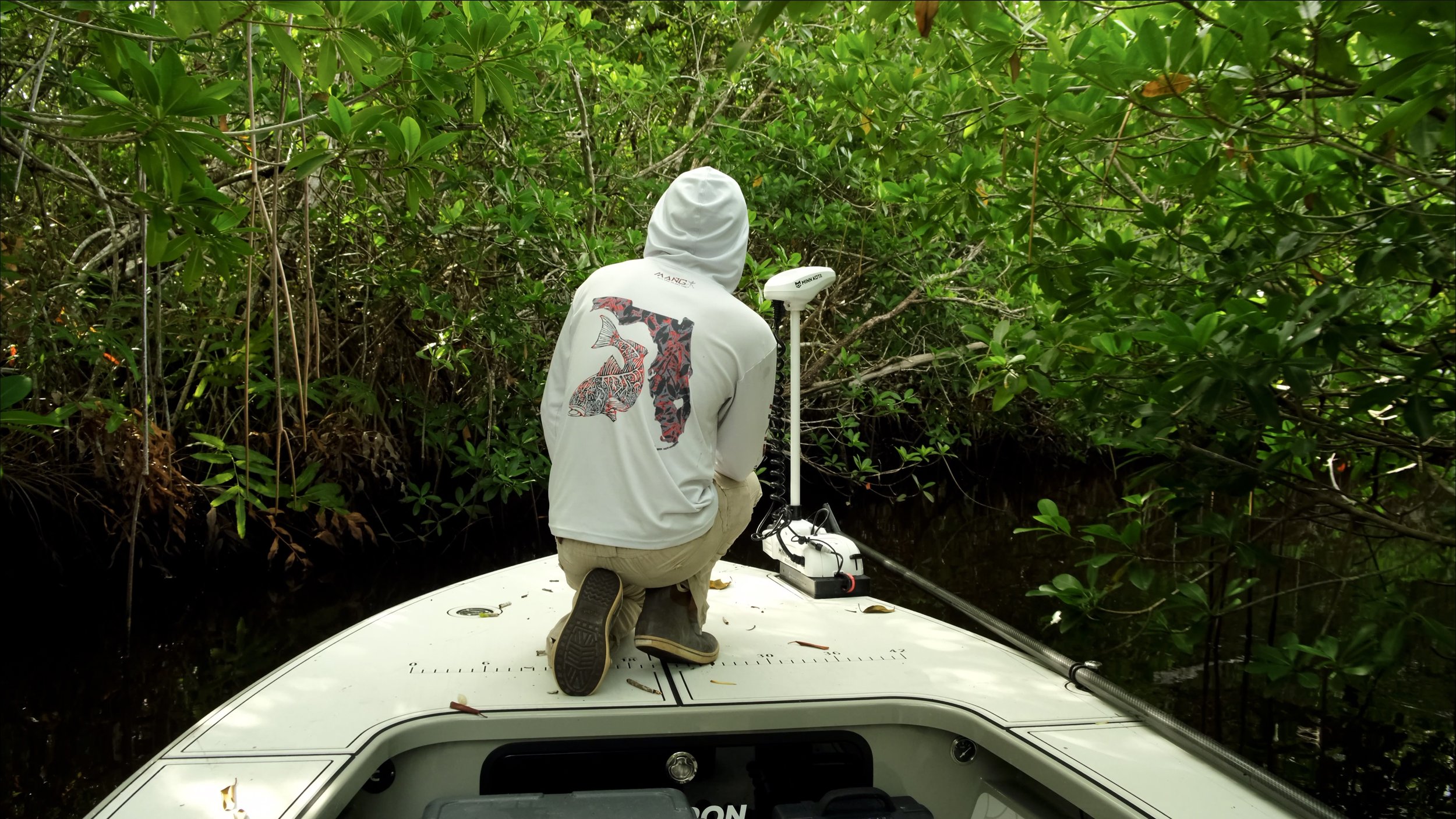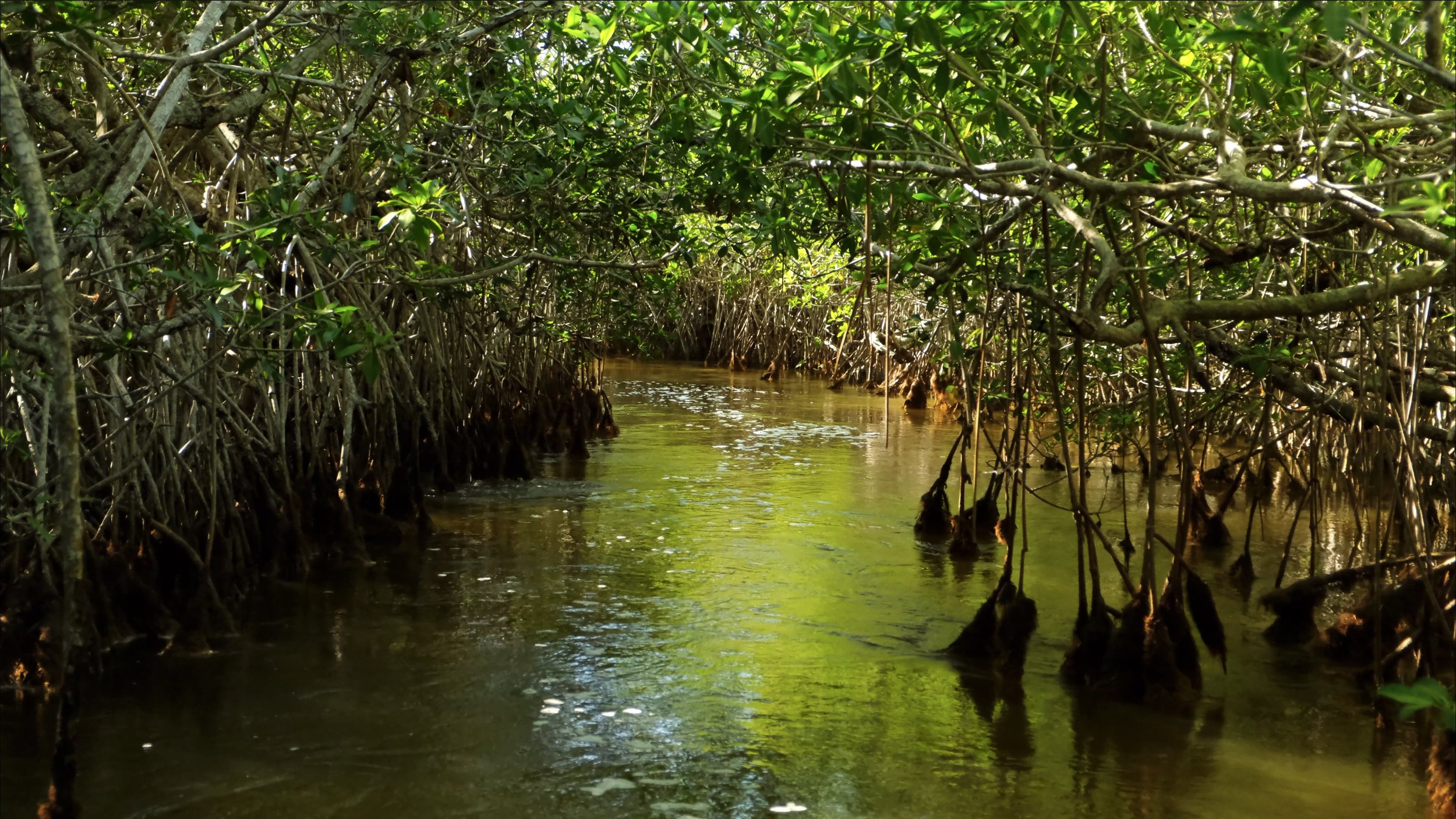“The River of Grass”
- Marjory Stoneman Douglas
The Florida Everglades, often called the "River of Grass," is a unique ecosystem of mangroves, sawgrass marshes, and cypress swamps, home to a wide range of fish species. The park features two main fishing areas: the "inside," with its freshwater influence and lush environment, and the "outside," with its shoreline flats and mangrove islands.
Both offer excellent opportunities for sight fishing with fly and light tackle, and the fishing spots depend on the season and conditions. In winter, we focus on the backwaters, where fish seek warmer shallow waters with dark bottoms. Spring and summer bring fish to the coastline, with lower winds and warm temperatures making for some of the best fishing of the year. This can lead to some incredible sight fishing opportunities along the beach, where Snook and Reds can be found cruising for their next meal.
One major advantage of inshore fishing here is the ability to find sheltered spots from wind and weather. Whether we’re fishing the back or front of the Everglades, the variety of species, including snook, redfish, and tarpon, means there’s always something to chase. We adapt our approach to the conditions, whether using fly fishing or light tackle, ensuring an unforgettable experience regardless of your skill level.
Fishing Charters
Fly Fishing
All our fly gear is top of the line with Orvis Products. Fly lines are top quality for optimum casting ability, specific for the style of fishing the Everglades require. Christian provides and ties all the flies used on the fishing trips, if you have your own gear you prefer, just let me know!
Light-tackle Gear
A go-to option for beginner or even the most experienced anglers. Spinning gear is sure to make your day in even the toughest conditions. All of my spinning tackle is top of the line consisting of Bull Bay rods, FFP reels, and PENN setups.
Our Fish
-

Snook
Everglades snook are known for their aggressive strikes and acrobatic fights, thriving in the mangrove ecosystems of the backcountry. Sight fishing and blind casting are the main techniques, requiring precise casts and skillful presentations. After the spring migration, snook move to outer islands, cruising flats or resting near mangrove shorelines. Their adaptability to varying salinity levels makes them resilient, shifting between coastal and inland waters. Snook typically weigh 1-12 pounds, with trophy fish reaching up to 20 pounds.
-

Redfish
Redfish are abundant in both the outside flats and backcountry, offering an exciting challenge for fly anglers and light tackle enthusiasts. Known for their copper-colored bodies and black tail spots, they typically weigh between 3 and 6 pounds, with fish over 10 pounds common. Redfish are often caught sight fishing—tailing in ponds, cruising shorelines, or feeding on oyster bars. Whether targeting them via spinning reels or fly, these fish are worth your wild.
-

Tarpon
Tarpon can be targeted inshore year-round, with peak season from March to June when large migratory fish flood the coastal waters. Early morning rollers offer a chance for well-placed casts, while juvenile tarpon are most abundant in mid to late summer, often found in backcountry creeks and bays. Micro tarpon in the backwaters range from 5 to 30 pounds, while Adults can exceed 100 pounds.
What the Legends Say.
“It’s a mysterious place, incredibly mysterious. I always feel like I’m close to the fish of a lifetime even though I haven’t caught one yet”
— Capt. Steve Huff
“You don't not only love the Everglades, you live the Everglades.”
- Andy Mill
“If you want solace and you want quiet, you don’t want to see other boats running around. It's beautiful back there. It's just so serene.”
- Lloyd Wruble





